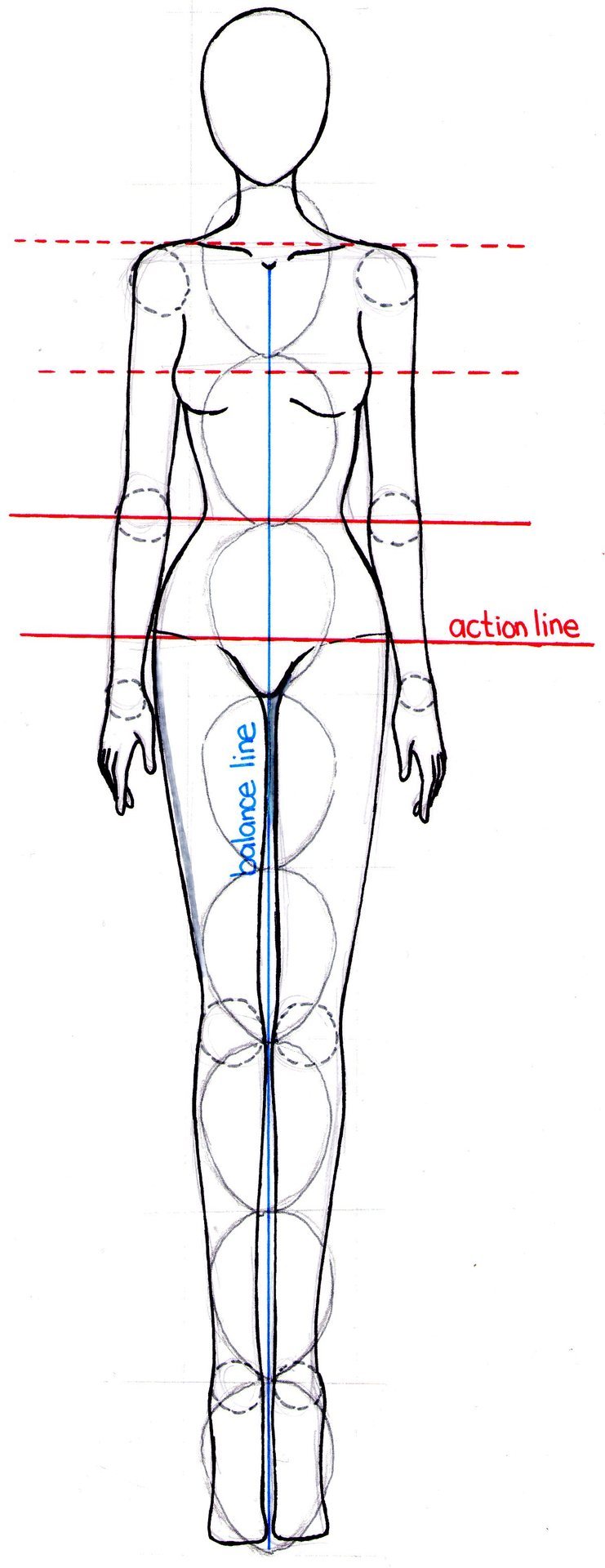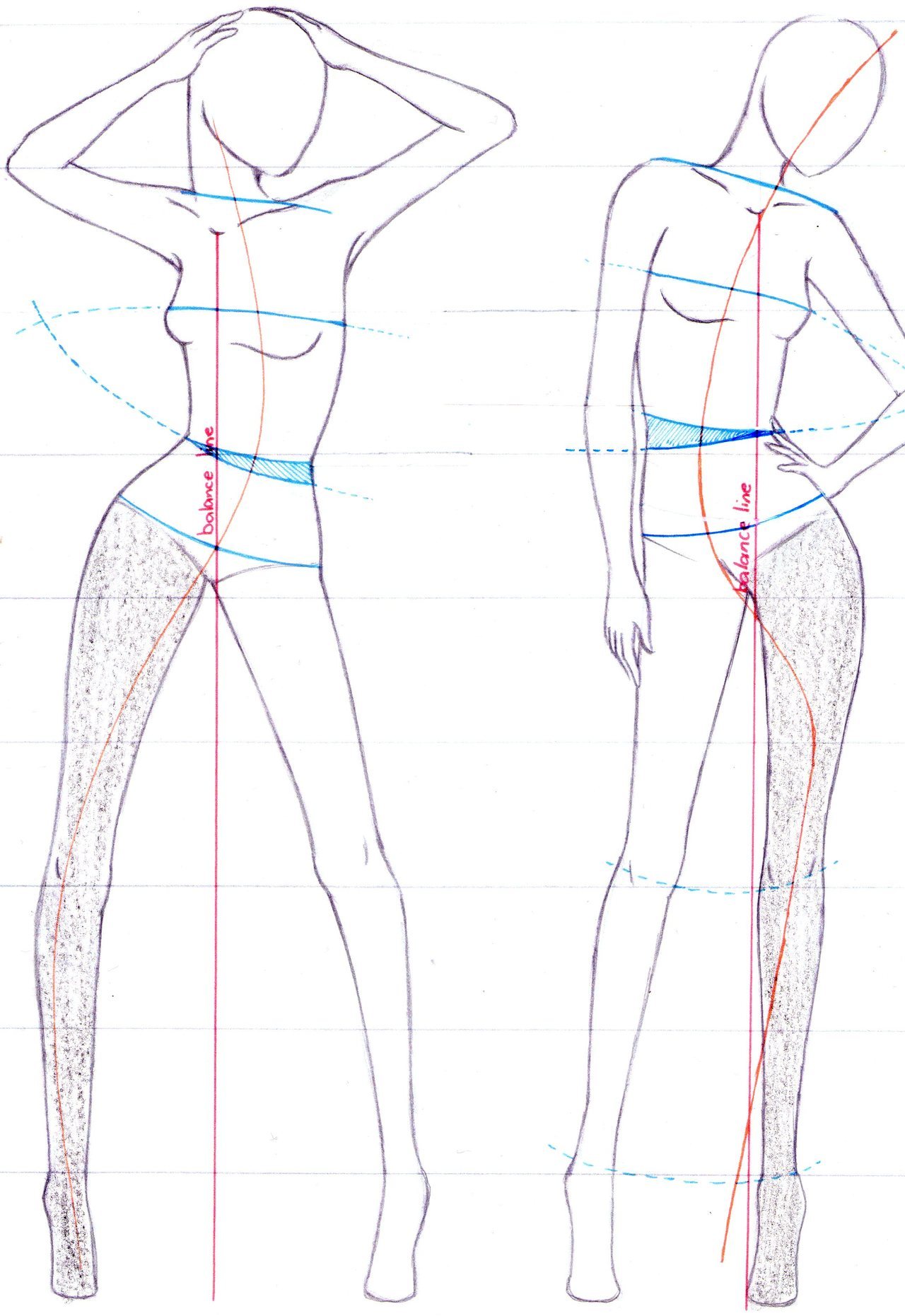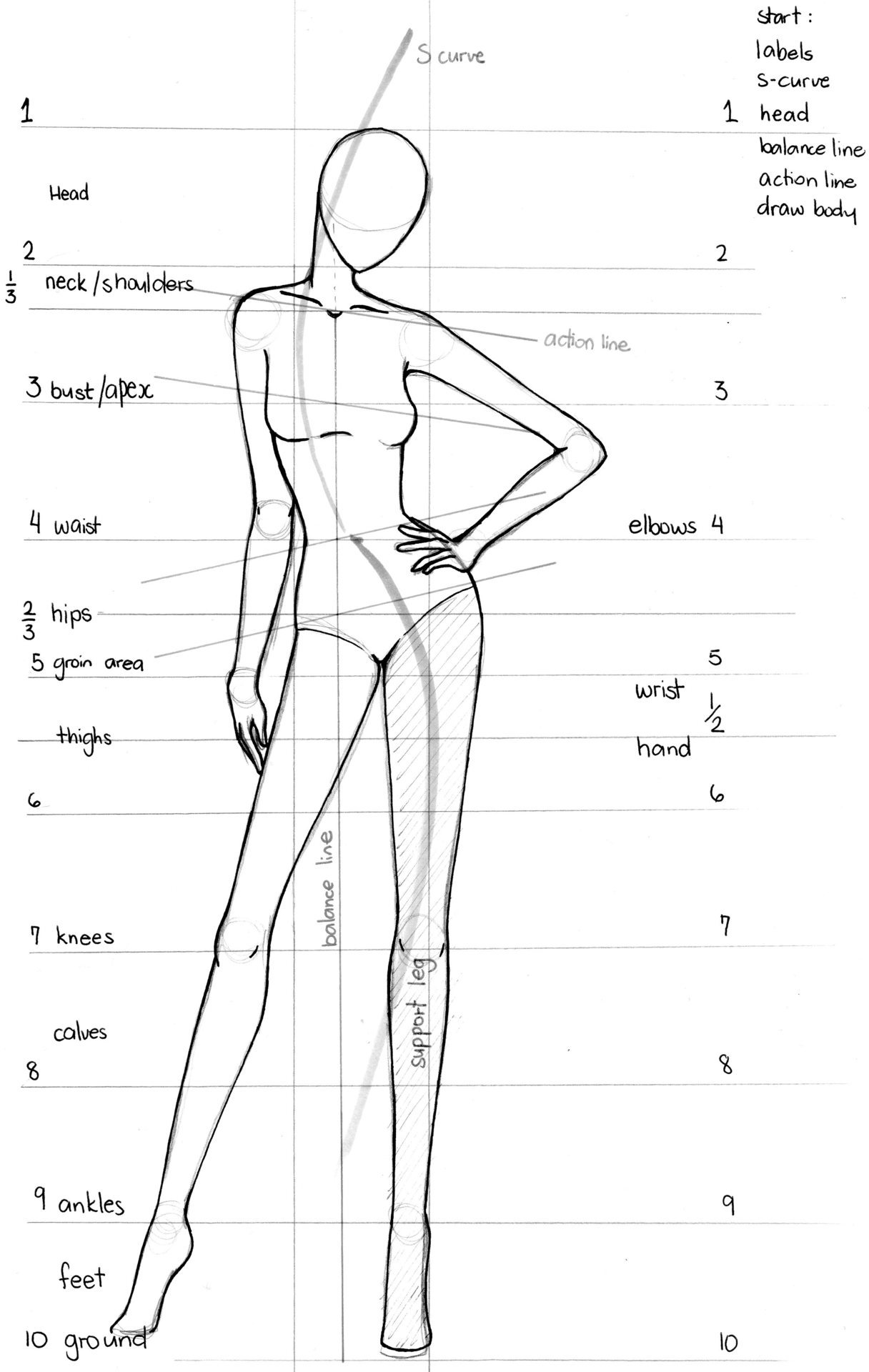 Drawing Figure Poses
Drawing Figure Poses
Drawing the fashion figure is one thing; making different poses is another.
When it comes to drawing the figure in motion, there are a few guidelines that are very helpful to create a balanced and realistic pose.
These lines are called action lines (red) which I have divided into two groups. (1) The broken lines are the shoulder action line and the apex action line. (2) The solid lines are the waist action line and the hip action line. When the figure moves, the very common S-curve is formed. If you study photos of models, a normal pose is a contrapposto which is another name for the S-curve. This represents the relaxed positing of a figure.
To achieve an S-curve (orange in the second photo) , the two sets of action lines must intersect at one point, thus creating a curve in the torso where one side is stretched while the other is compressed. This is shown in the second photo with the action lines in blue.
Another guideline is the balance line (blue) which divides the body in half - when in front view - always starting in between the collar bones.
Another guide is the shaded leg which is shown in the second photo. This leg is where most of the body weight is on which means this must always be closer to the balance line. The bottom curve of the letter S should also fall on the shaded leg which is also on the same side as the intersection point of the action lines. While this is called the support leg, the non-shaded leg is called the play leg. There is much more freedom in drawing the play leg since it has not particular use when drawing a balanced figure.
I tend to draw my figures as a representation of the human body, only elongated, therefore I learned how to properly draw the body that looks realistic, balanced and possible.












0 comments:
Post a Comment